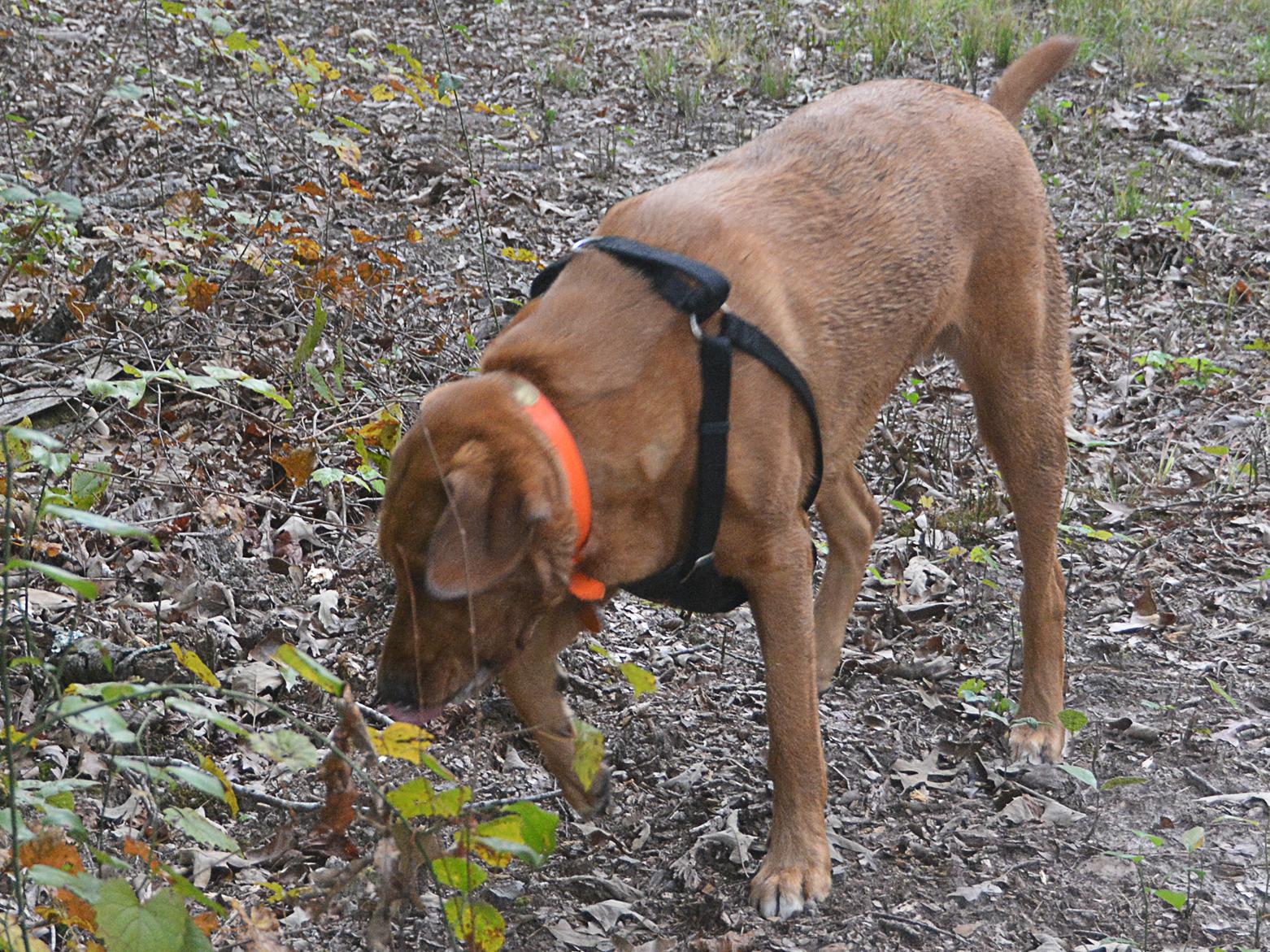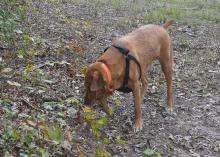Information Possibly Outdated
The information presented on this page was originally released on October 26, 2018. It may not be outdated, but please search our site for more current information. If you plan to quote or reference this information in a publication, please check with the Extension specialist or author before proceeding.
Man’s best friends serve as wildlife scientists
STARKVILLE, Miss. -- Wildlife scientists are learning that, in addition to being our “best friends,” dogs also can be also be our best conservation tools.
Dogs are becoming more common in wildlife conservation and research. Their sensitive noses have about 40 times more scent receptors than those of people. Dogs can be trained to sniff out narcotics, bombs, missing persons and even cancer. They can also be taught to find tortoises, pandas, shark fins, ivory, bears, birds and many other wildlife species of interest to biologists.
Detection dogs help with wildlife law enforcement. Conservation law officers use specially trained dogs to detect wildlife contraband in airports, warehouses and ocean containers. Illegal wildlife trafficking hurts populations of some species, including parrots, turtles, tigers and rhinos.
Wildlife parts, such as elephant ivory, rhino horns and tiger paws, are sold for their perceived medicinal benefits. Wild animals, such as parrots and tortoises, are sold illegally for the pet industry. Detection dogs can find live wildlife or wildlife parts smuggled in cargo or vehicles and help stem profits from this illegal trade.
Dogs are also used as a nonlethal method for controlling predators and reducing human-wildlife conflicts. One study out West used Karelian Bear Dogs to discourage bears from situations that bring them into contact with people. Such efforts can reduce the need for wildlife to be euthanized to protect humans or human property.
Dogs serve as wildlife research assistants. Trained conservation dogs sniff out wildlife droppings, known as scat. Scat samples help scientists better understand where and how animals are living, so biologists know what habitat to protect.
Dogs can be especially useful for detecting wildlife that are rare or secretive. Likewise, they excel at finding undesirable species that may be invading an area. Dogs also find it easier to move through rough terrain, allowing scientists access to information they might not otherwise be able to get.
Many breeds can be trained to serve as detection dogs. Labrador retrievers, German shepherds, border collies and mixed breeds are commonly used. Ideal detection dogs for wildlife work are energetic, quick to please and eager to play. Private organizations such as Working Dogs for Conservation and Conservation Canines now exist to train dogs to serve as workers in the wildlife conservation field.
Successful protection of our wildlife resources will take effort from many from across the nation and globe. Now, it seems, even dogs are pitching in and lending their talents. What can you do to help conserve wildlife?

Editor’s Note: Extension Outdoors is a column authored by several different experts in the Mississippi State University Extension Service.







